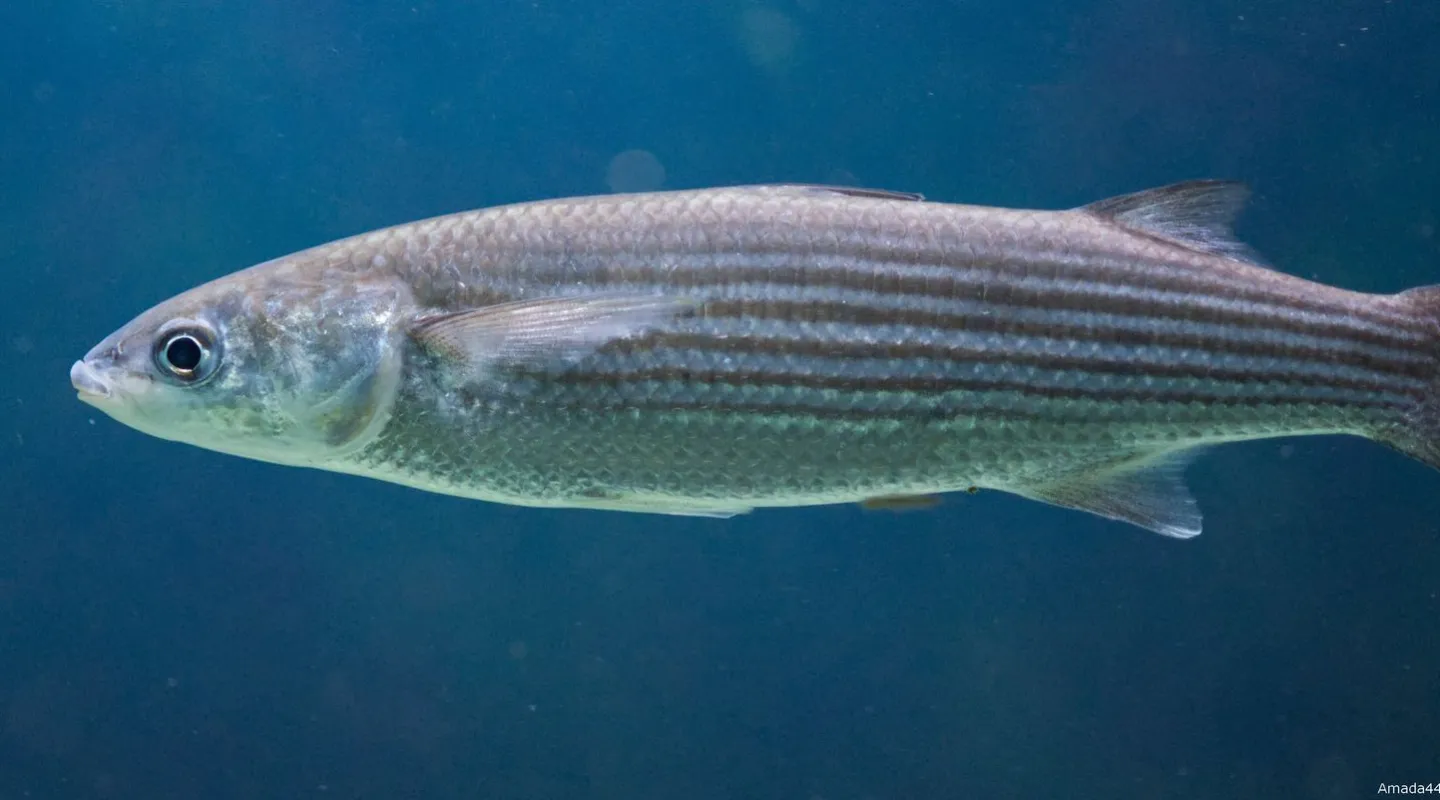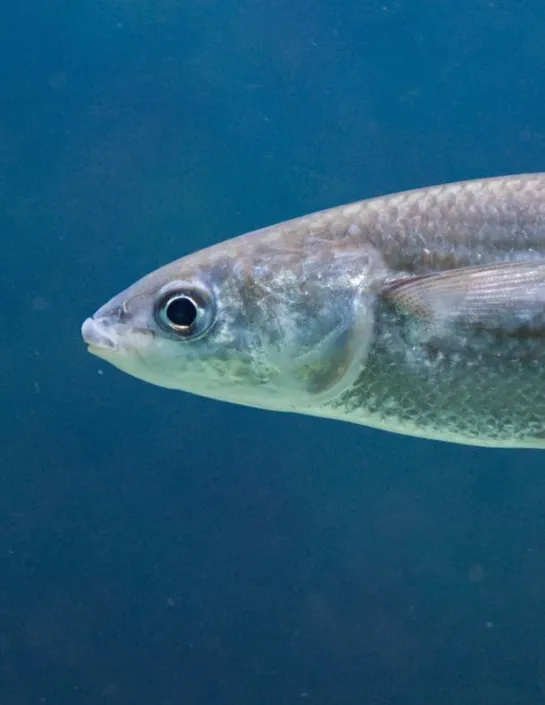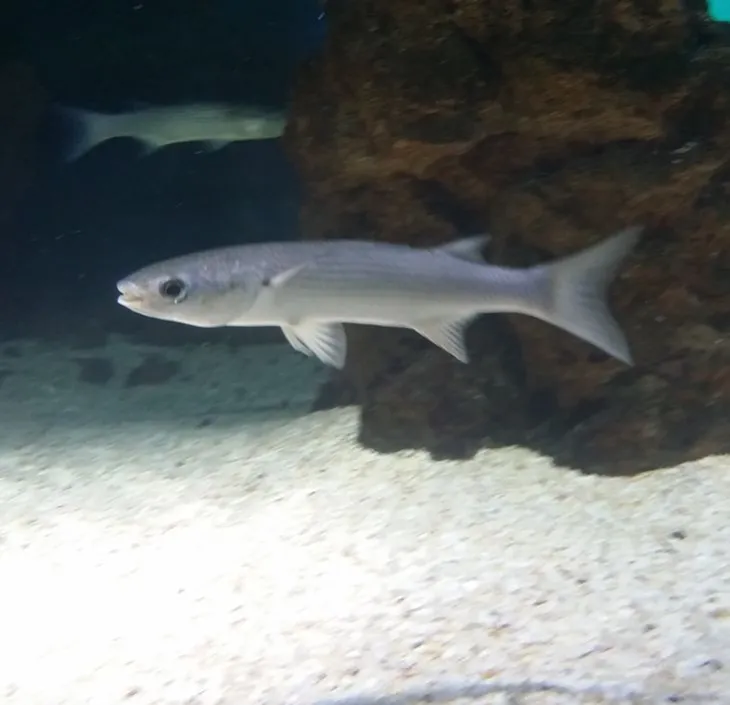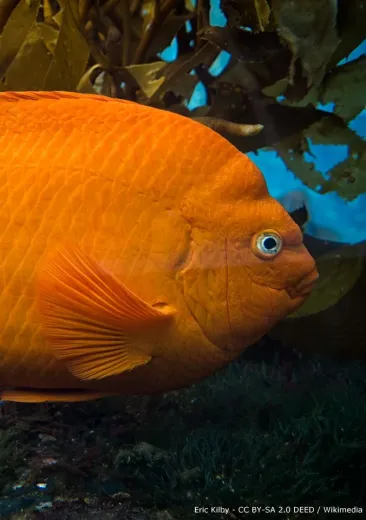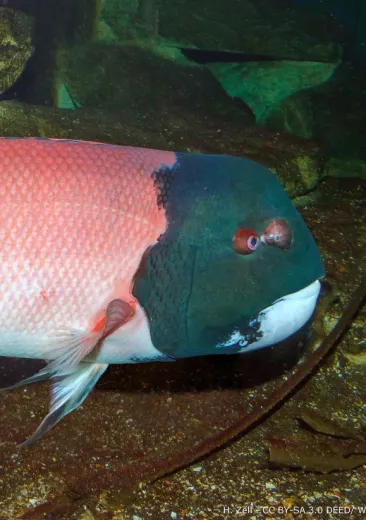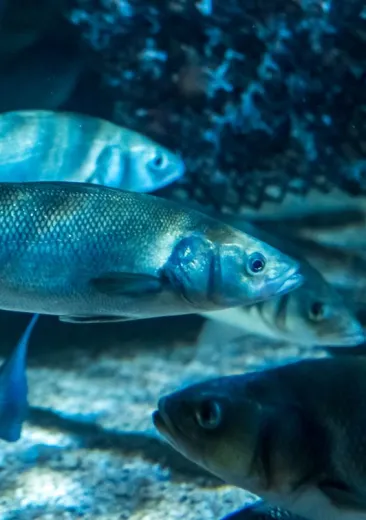Where is the animal to be found?
Found in the Mediterranean, North-East Atlantic, English Channel and North Sea, it can be found from Iceland and Scandinavia to Senegal and the Cape Verde Islands.
The thick-lipped grey mullet heads northwards in its distribution area in search of food in spring, before heading south again in autumn.
A pelagic fish that lives in shoals close to the coast, it frequents lagoons and estuaries where it lives on muddy and sandy bottoms during the warm season. Mullet can also swim up rivers.
How can it be recognised?
The lippled mullet has an elongated, streamlined and rather stocky body, bluish grey in colour with greenish and yellowish highlights. The belly is lighter. It is capable of swimming, accelerating rapidly and jumping out of the water.
The massive, flattened head is characterised by thick lips;
What is distinctive about it?
Females are larger than males. The reproductive age is 2 years for males and 3 years for females. Pelagic eggs are laid between February and April; juveniles that remain in coastal lagoons or estuaries between April and June return to the sea during the summer.
These juveniles feed on zooplankton, whereas adult mullets feed on vegetation and mud, sometimes including small invertebrates. Adults search for food both day and night, on the bottom.
Mullet roe is eaten as bottarga and is nicknamed "Mediterranean caviar".
Threats
Mullet is widely fished industrially in the Mediterranean and Northern Europe.
The minimum size authorised for fishing is 20 cm in the French Mediterranean (variable depending on the region).
